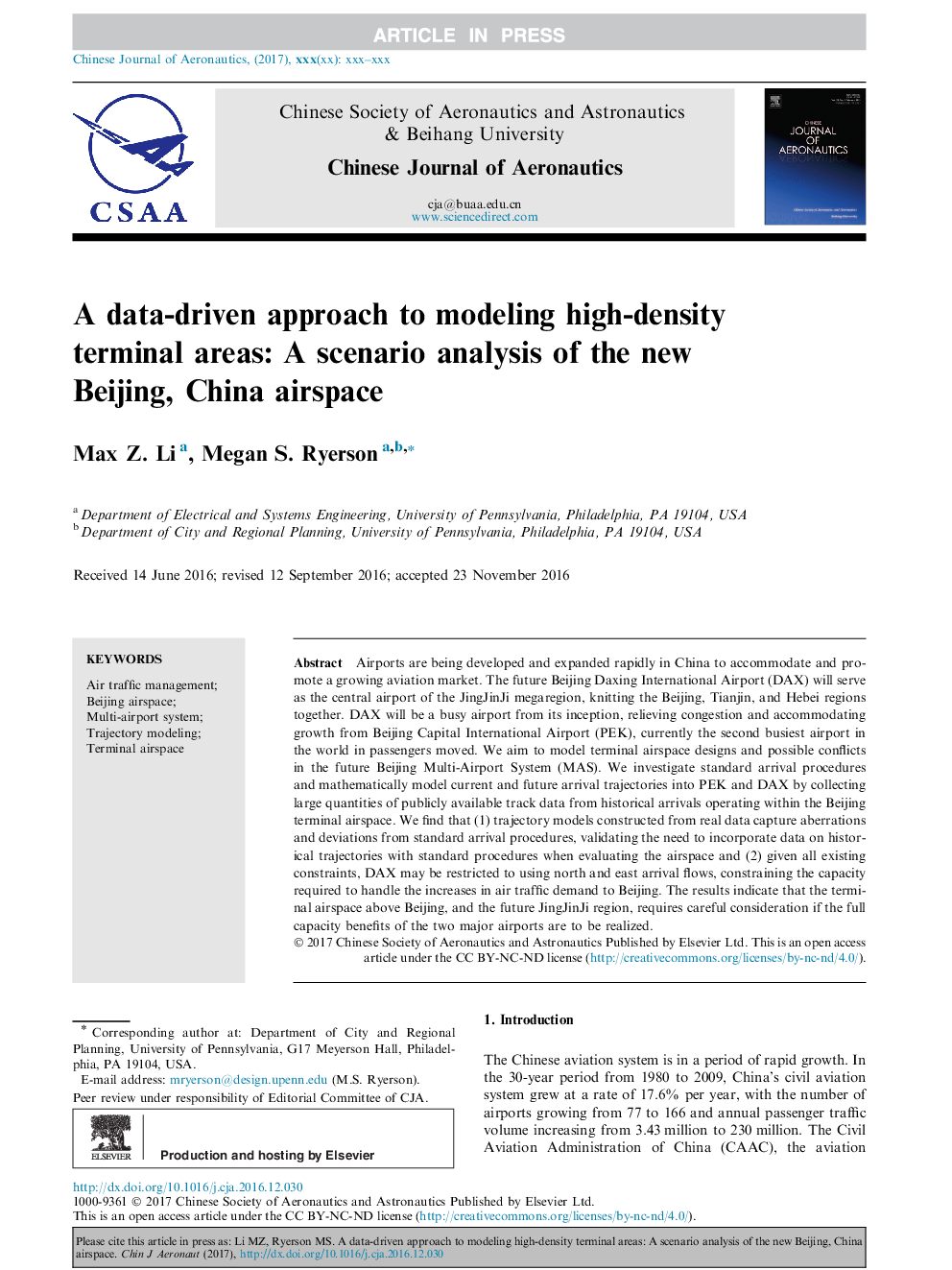| Article ID | Journal | Published Year | Pages | File Type |
|---|---|---|---|---|
| 7154055 | Chinese Journal of Aeronautics | 2017 | 16 Pages |
Abstract
Airports are being developed and expanded rapidly in China to accommodate and promote a growing aviation market. The future Beijing Daxing International Airport (DAX) will serve as the central airport of the JingJinJi megaregion, knitting the Beijing, Tianjin, and Hebei regions together. DAX will be a busy airport from its inception, relieving congestion and accommodating growth from Beijing Capital International Airport (PEK), currently the second busiest airport in the world in passengers moved. We aim to model terminal airspace designs and possible conflicts in the future Beijing Multi-Airport System (MAS). We investigate standard arrival procedures and mathematically model current and future arrival trajectories into PEK and DAX by collecting large quantities of publicly available track data from historical arrivals operating within the Beijing terminal airspace. We find that (1) trajectory models constructed from real data capture aberrations and deviations from standard arrival procedures, validating the need to incorporate data on historical trajectories with standard procedures when evaluating the airspace and (2) given all existing constraints, DAX may be restricted to using north and east arrival flows, constraining the capacity required to handle the increases in air traffic demand to Beijing. The results indicate that the terminal airspace above Beijing, and the future JingJinJi region, requires careful consideration if the full capacity benefits of the two major airports are to be realized.
Related Topics
Physical Sciences and Engineering
Engineering
Aerospace Engineering
Authors
Max Z. Li, Megan S. Ryerson,
